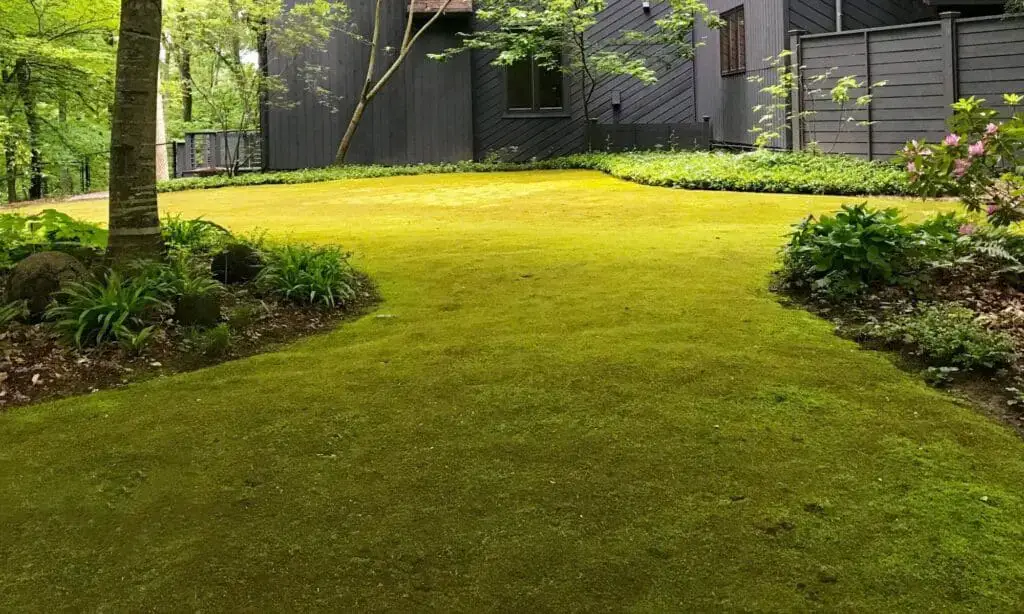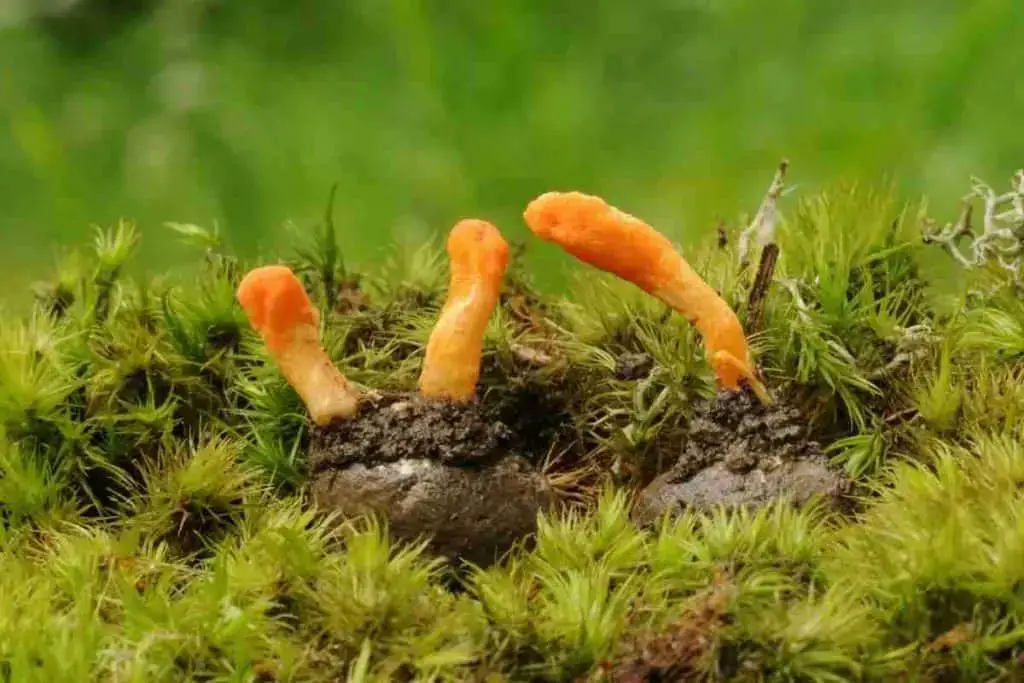No, it is not a fungus. But it is easy to guess the error because there are various similarities.
Mosses are a type of plant that you will find all over the world. They can be found in many different environments, from the coldest parts of the Arctic to the hottest parts of Africa.
However, one question that many people ask is whether or not moss is a fungus?
Some people say it is while others disagree. Let’s take a closer look at moss and see if we can determine if it is a fungus or not.
What Is Moss?
Mosses are very simple plants, and they do not have flowers or seeds like most other plants. Mosses are classed as a non-vascular plant which means it doesn’t have roots.
Mosses add a rich, beautiful component to our landscaping, in many cases with no encouragement from us
Bruce McCune is a professor of Botany and Plant Pathology with Oregon State University in Corvallis, Ore
The moss reproduces asexually and sexually by releasing spores into the air, which then land on moist surfaces and start to grow new moss plants.

Mosses are often mistaken for being a type of fungus, but this is not the case. Mosses are actually more closely related to green algae (or charophytes) than they are to fungi.
Both mosses and algae belong to a group of plants known as charophytes which is a common ancestor to all plants and share certain characteristics, such as having no vascular tissue and being small in size.
What Is Fungus?
Fungi are not plants.
They are a group of eukaryotic organisms which include yeasts, molds, and fungi. They are their own separate group of organisms called Kingdom Fungi.
The part of the Fungi that we see, like mushrooms, is just the fruit of the organism. The main body of the fungus is called the mycelium, which is made up of tiny filaments called hyphae.
These hyphae are usually hidden in the soil, wood, or other food sources.
They can grow to great lengths but are often only seen once they produce fruiting bodies such as mushrooms. Unlike plants, fungi cannot photosynthesize and obtain food by absorbing nutrients from other organisms. They have no stomachs and must digest food before it can enter their body.
Many fungi are parasitic, meaning they live on other organisms, while others are decomposers, breaking down dead organic matter.
Some fungi also form symbiotic relationships with other organisms (see lichens), such as the relationship between some species of fungi and trees.
In fact, Fungi are considered to be part of the Fungi kingdom and what makes Fungi so interesting is that they don’t need sunlight or soil and grow mostly in the dark.
The fungus can have a wide variety of uses for humans. They can be decomposers, cause disease, or even live in symbiotic relationships with plants. They are also used in the production of food, medicine, and other products. Fungus is all around us; it’s just that we don’t see them most of the time.
You May Also Like To Read:
Resources: Utah State University
Differences Between Moss And Fungus
While mosses and fungi do have some similarities, such as their spore-bearing reproductive structures, they are very different organisms.
Mosses differ fundamentally from other plants in the way that they acquire nutrients and water. Most mosses derive the major portion of their nutrients and water from the atmosphere—dust and rainwater, rather than soil.
Bruce McCune is a professor of Botany and Plant Pathology with Oregon State University in Corvallis, Ore
For example, mosses have chlorophyll and can produce their own food through photosynthesis, whereas fungus cannot.
- Appearance: Though moss and fungus might appear similar at first glance, there are several key differences between these two organisms. For one, mosses are green, while fungi come in a variety of colors depending on the species. Mosses also have a distinctive three-layered structure, whereas fungi are classified as single cells.
- Texture: The texture of moss and fungus can also help you to tell these two apart. While moss has a soft and spongy texture, fungus is often harder and leathery feel to it, almost like a mushroom.
- Size: Moss is also generally smaller than fungi “typically 1-10 cm” in size and has a slender stalk with a small cap on top while fungi often appear as a large, spreading mass.
- Habitat: Mosses are found all over the world in a variety of habitats. Their ideal conditions are shady, moist areas with plenty of humidity and partial or direct sunlight. Fungi, on the other hand, are often found in damp and dark places such as forests.
- Growth Rates: Mosses grow relatively slowly, with some species only growing a few millimeters each year. Fungi, on the other hand, can grow quite rapidly, sometimes spreading over an area in just a few days!
- Reproduction: One thing that moss and fungus have in common is that they both reproduce through spores. Mosses release their spores into the air, where they land on moist surfaces and start to grow. Fungus, on the other hand, release tiny microscopic spores into their environment but they rarely get airborne.
Do Mosses And Fungus Serve The Same Purpose?
Mosses and fungi both have a variety of uses. Moss is commonly used as a type of ground cover or in gardens. It is also used to create moss walls and roofs! Some species of moss are even used in the production of whiskey.
Fungi are often used in the production of food such as bread, cheese, and beer. They are also used in medicine and to make antibiotics.
You May Also Like To Read:

How To Care For Moss And Fungus?
Though often thought of as unwelcome growths, moss and fungus can actually add a great deal of appeal to your garden. Both are low-maintenance plants that require little more than occasional watering and some protection from the sun.
Moss is an especially good choice for shady areas, as it is tolerant of low light conditions. Fungus, on the other hand, can add a splash of color to any garden.
- Sunlight: Mosses prefer shady, moist conditions and will do best in an area that receives partial or dappled sunlight. Fungi, on the other hand, grow better in dark areas that have little to no light.
- Water: In order to thrive, mosses and fungi need to be kept moist. While they are capable of surviving in dry conditions for short periods of time, moss will quickly start to turn brown and the fungi can start to shrivel up if they do not have a steady supply of water.
- Fertilizer: Mosses don’t generally need fertilizer but you can add a slow-release fertilizer to the soil if you want to encourage growth. Fungi also don’t need fertilizer but adding some compost to the soil can help to promote growth.
- Pruning: Mosses don’t generally need to be pruned but you can trim them back if they start to spread into areas where you don’t want them to grow. Fungi can also don’t need to be pruned! Once they are large enough they are ready to harvest.
- Pests And Diseases: Mosses and fungi are both relatively resistant to pests and diseases. However, they can sometimes be susceptible to fungal infections, especially if they are grown in damp conditions.
You May Also Like To Read:
Common Problems Moss And Fungus Have
Although moss and fungus are both small, they can cause big problems if they start growing in your yard. Moss is often seen as a sign of a healthy lawn, but too much moss can actually be detrimental to grass growth.
Fungus, on the other hand, feeds on organic matter and can quickly kill a plant if left unchecked. If you do find moss or fungus growing in your yard, and you want to remove it there are several products available to help control their growth.
Where Can I Buy Moss Or Fungus?
For many gardeners, moss and fungus can be a problem. However, moss and fungus also have their uses. In shady areas, moss can provide a welcome splash of green, and some types of fungus can be used to produce dyes or add flavor to food.
As a result, they are sometimes prized by hobbyists and professionals alike. So if you’re looking to buy moss or fungus so you can grow your own then your local nursery is a good place to start.
Many nurseries sell both live specimens and spore kits, making it easy to get started with moss or fungus gardening.
If you’re looking for a particular type of moss or fungus, it’s best to do some research to find out where it grows naturally and whether or not it’s commercially available.
Is Moss And Fungus Poisonous To Dogs?
While neither moss nor fungus are generally considered poisonous to dogs, there have been some reports of gastrointestinal upset after dogs have eaten large quantities of either one.
If you are concerned that your dog has eaten either moss or fungus, it’s always best to consult with a veterinarian. With proper diagnosis and treatment, your dog will likely make a full recovery.
Are Fungi and Mosses Bad for Trees?
Yes and no. As for the Mushrooms, feeding on the nutrients of other organisms, they can attack a plant and kill it.
On the other hand, mosses feed on light and substances they take from the water and use the trees only as a means of support without damaging them. However, I want to make a small consideration. Although fungi are harmful to trees, they break down materials in stressed and dead trees as part of a complex nutrient cycle that is vital for regeneration and a healthy ecosystem.
While for mosses, there is an old saying that you don’t stick moss on a rolling stone. This is to say that moss will attach more easily to trees already subject to stress, making them less “mobile.”
Is Moss a Lichen?
No. Lichens are commonly and erroneously associated with mosses, but they are not actually the same thing. To increase the confusion, we thought about the common names of some lichens called mosses, as in the case of reindeer moss.
Moss is a plant, while Lichens are complex organisms created by what is currently understood to be a symbiotic relationship between a fungus and algae or cyanobacteria.
The fungal partner provides a structure for the lichen, while the algal or cyanobacterial partner produces food through photosynthesis.
They don’t have roots, leaves, or stems as mosses do. Chloroplasts in lichens are also contained in the lichen surface.
This symbiotic relationship allows lichens to survive in harsh environments such as rocks, tree trunks, and even bare soil where most plants cannot survive.
Mosses, on the other hand, are plants; they are a type of non-vascular plant that belongs to the Bryophyta division.
So moss is not a fungus; it is not a lichen, while a lichen contains a fungus. Clear, isn’t it?
Resources: Biodiversity Center of University of Texsas
Final Thoughts
When it comes to moss and fungus, these two plants couldn’t be more different. Though they might look similar at first glance, mosses and fungi have very different appearances, textures, sizes, and habitats.
They also grow at different rates and serve different purposes. Knowing how to care for each plant will help you to keep them healthy and looking their best.